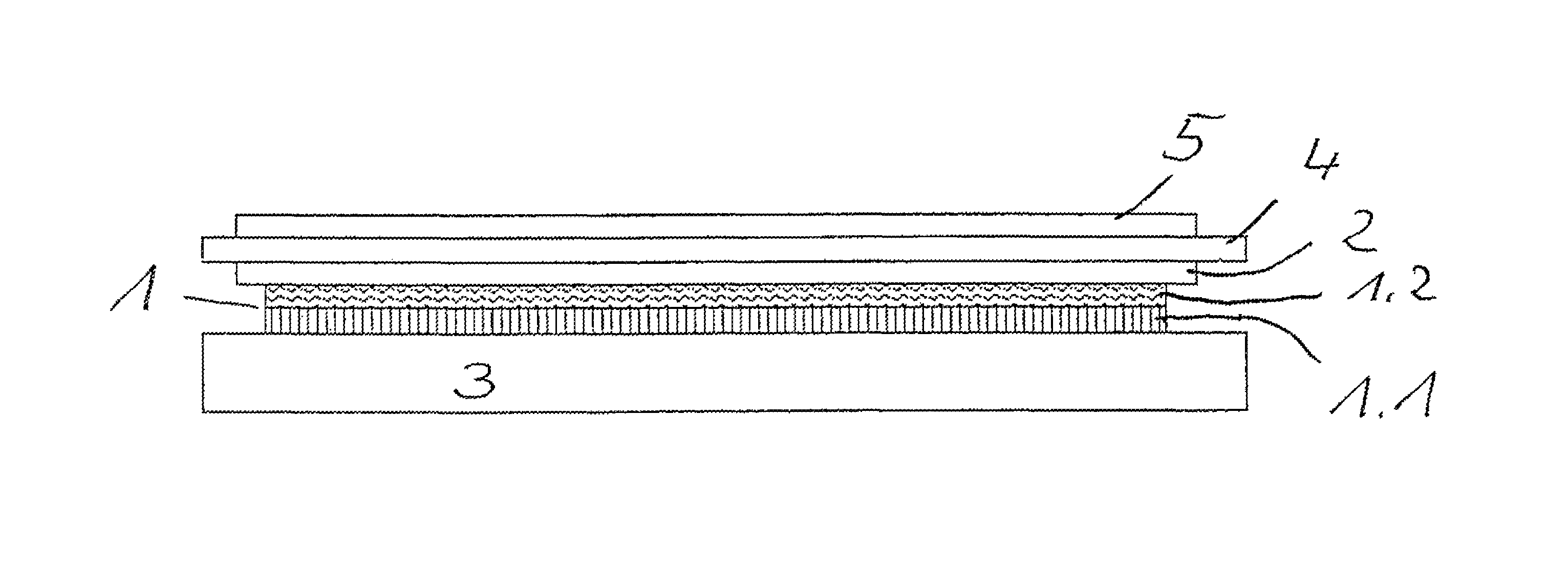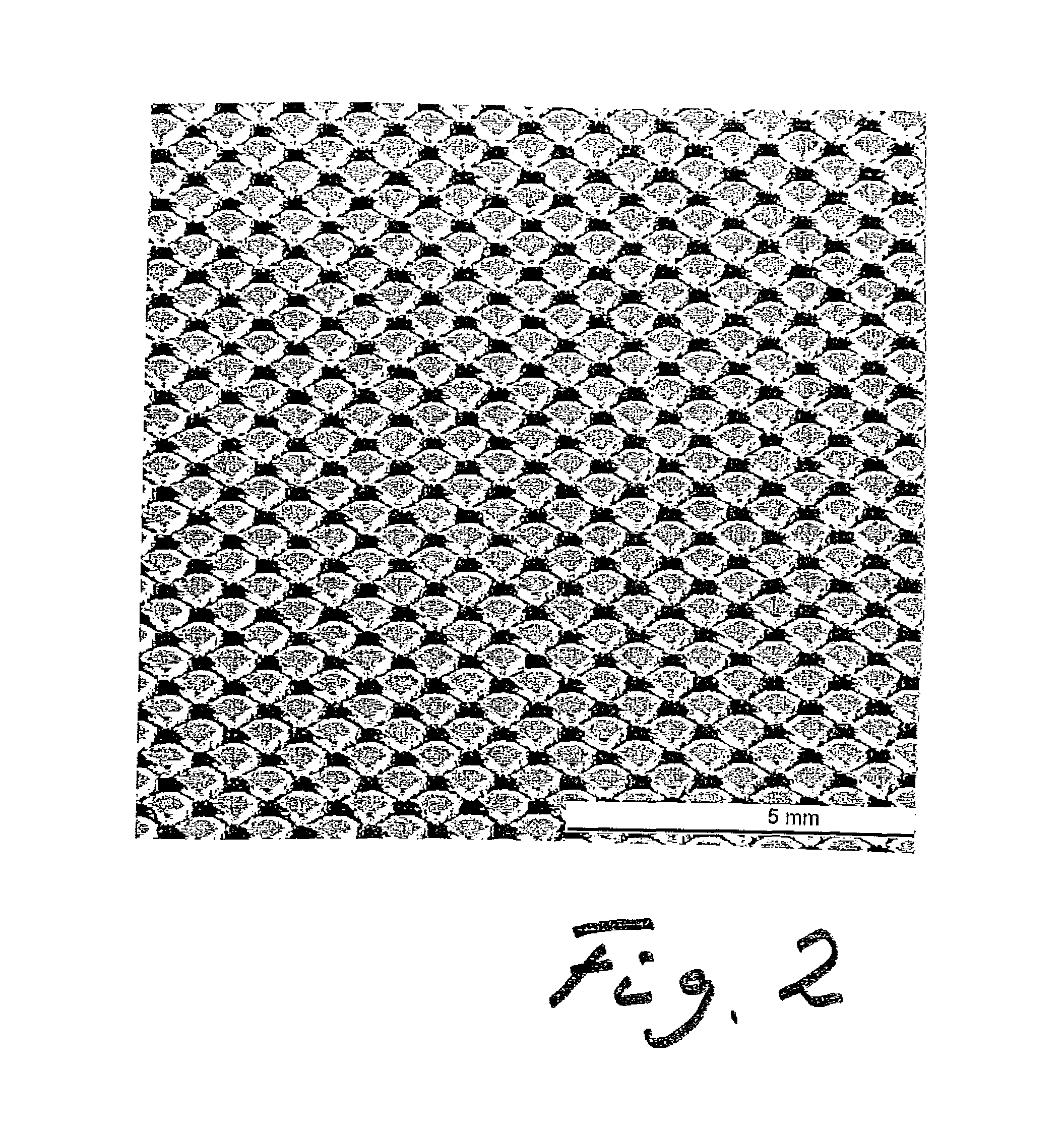Contact element for an electrically conductive connection between an anode and an interconnector of a high-temperature fuel cell
a technology of contact element and fuel cell, which is applied in the direction of fuel cell, solid electrolyte fuel cell, cell components, etc., can solve the problems of thermal expansion, contact can be ripped off, and the contacting of the cathode is subject to tensile strain, so as to achieve more reliable electrically conductive connection and long-term stability
- Summary
- Abstract
- Description
- Claims
- Application Information
AI Technical Summary
Benefits of technology
Problems solved by technology
Method used
Image
Examples
Embodiment Construction
[0034]A high-temperature fuel cell is shown in section in FIG. 1. In this respect, a contact element 1 on an interconnector 3 is arranged between it and the anode 2. The solid electrolyte 4 and a cathode 5 are arranged above the anode 2.
[0035]The contact element 1 is here formed with two films as the two part elements 1.1 and 1.2. In this respect, the part element 1.1 arranged at the interconnector side is formed from pure copper (α=16.5*10−3 K−1 at 20° C.) and it has a thickness of 290 μm. The second part element 1.2 arranged at the anode side is formed with a 120 μm thick film of pure nickel (α=13.0*10−3 K−1 at 20° C.)
PUM
 Login to View More
Login to View More Abstract
Description
Claims
Application Information
 Login to View More
Login to View More - R&D
- Intellectual Property
- Life Sciences
- Materials
- Tech Scout
- Unparalleled Data Quality
- Higher Quality Content
- 60% Fewer Hallucinations
Browse by: Latest US Patents, China's latest patents, Technical Efficacy Thesaurus, Application Domain, Technology Topic, Popular Technical Reports.
© 2025 PatSnap. All rights reserved.Legal|Privacy policy|Modern Slavery Act Transparency Statement|Sitemap|About US| Contact US: help@patsnap.com



